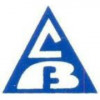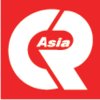Filter interviews by
Linde India Diploma Trainee Engineer Interview Questions, Process, and Tips
Linde India Diploma Trainee Engineer Interview Experiences
1 interview found
I applied via Campus Placement and was interviewed in Sep 2023. There were 3 interview rounds.
Amptitude test average
(3 Questions)
- Q1. Explain generation, transmission and distribution system.
- Ans.
Generation, transmission, and distribution system are the three main components of the electricity supply chain.
Generation: Production of electricity from various sources like coal, natural gas, hydro, wind, solar, etc.
Transmission: High voltage lines used to transport electricity over long distances from power plants to substations.
Distribution: Low voltage lines that deliver electricity from substations to homes, bus
- Q2. Why transmission was in high voltage.
- Ans.
Transmission is in high voltage to reduce energy losses and increase efficiency.
High voltage reduces energy losses during transmission
Lower current at higher voltage leads to lower resistive losses
Efficiency of transmission lines increases with higher voltage
High voltage allows for long distance power transmission with minimal losses
- Q3. On which principle generator and motor work.
- Ans.
Generators and motors work on the principle of electromagnetic induction.
Generators convert mechanical energy into electrical energy through electromagnetic induction
Motors convert electrical energy into mechanical energy through electromagnetic induction
Both devices rely on the interaction between magnetic fields and conductors to function effectively
(2 Questions)
- Q1. How many member in you family
- Q2. What was the annual income
- Ans.
The annual income for the position of Diploma Trainee Engineer was not disclosed during the interview.
Annual income was not mentioned during the interview
Salary details may vary based on company, location, and other factors
Interview Preparation Tips
- Dc machine
- AC machine
- Power System
- Electronics
Top trending discussions






Interview questions from similar companies

Interview Preparation Tips
Experience: Core: Subjects mainly are in design aspects of mass transfer, heat transfer and fluid mechanics.
Tips: Be thorough with the fundamentals and going through the basic formulae .CFD will be useful.
Round: Group Discussion
Experience: Generally they look for understanding of the subject. And it doesn't matter whether one is defending or offending the topic all that matters is to make your presence felt and your points to be noted.And a general rule of thumb is never to start a group discussion, wait till all speak, note their points and names, so that you can raise their point with their name, which shows that you are attentive and their points will serve as impetus for you to speak further.
Round: Interview
Experience: 1 technical interview: (20-25 minutes)Heat Transfer, Mass Transfer, Fluid Mechanics, CRE are concepts testedBe strong in your basic fundamentals
Tips: Be cool and composed in your interviews
Focus on key areas of processes like Heat Transfer, Mass Transfer, CRE and Fluid MechanicsBe thorough with pumps and pump characteristics
College Name: IIT Madras

I applied via Campus Placement and was interviewed before Apr 2022. There were 4 interview rounds.

Small aptitude test to check basic chemical engineering knowledge
Group discussion on a general topic
(1 Question)
- Q1. How does a tray function in a column
- Ans.
A tray functions in a column by providing a surface for the separation of different components in a process.
Trays are used in distillation columns to separate different components based on their boiling points.
They provide a large surface area for vapor-liquid contact, allowing for efficient separation.
Trays can have various designs, such as bubble cap trays or sieve trays, to enhance separation efficiency.
They can als...


(2 Questions)
- Q1. For Oil &gas knowledge fo API 1104 ,B 31.8 , 31.8 ASME SEC IX AND NDT ASME SEC VI AND PROJECT PROCEDURE EXPERIENCE FOR GAS PIPELINE
- Q2. What is difference between psl 2 and psl 1 Which pipe used for gas pipeline
- Ans.
PSL 2 has stricter requirements than PSL 1. Gas pipelines use PSL 2 pipes.
PSL 2 has higher minimum yield strength and stricter chemical composition requirements than PSL 1
PSL 2 also has non-destructive inspection requirements
Gas pipelines use PSL 2 pipes due to their higher strength and durability
PSL 1 pipes are typically used for low-pressure applications
Interview Preparation Tips

I applied via Company Website and was interviewed in Apr 2023. There were 3 interview rounds.

(1 Question)
- Q1. Resume Related questions
(3 Questions)
- Q1. Depending upon ur experience
- Q2. Work related questions
- Q3. Principal of UT
- Ans.
UT stands for Ultrasonic Testing, a non-destructive testing method used in engineering.
UT uses high frequency sound waves to detect flaws or defects in materials.
It is commonly used in industries like aerospace, automotive, and manufacturing.
UT can be used to inspect welds, pipelines, and structural components.
The results of UT are displayed in a visual representation called a C-scan or B-scan.

I applied via Walk-in and was interviewed before Jan 2024. There was 1 interview round.
(5 Questions)
- Q1. Why Conveyor use in Matterials Handling
- Ans.
Conveyors are used in materials handling to efficiently transport goods or materials from one place to another.
Conveyors help in automating the transportation process, increasing efficiency and reducing manual labor.
They can handle a wide range of materials, from small parts to heavy items.
Conveyors can be customized to fit specific needs, such as incline or decline conveyors for elevation changes.
Examples of conveyors...
- Q2. What is preventive maintenance
- Ans.
Preventive maintenance is the practice of regularly inspecting, servicing, and replacing parts to prevent equipment failure.
Regularly scheduled inspections and maintenance tasks are performed to prevent breakdowns
Replacement of worn out parts before they fail to avoid costly repairs
Helps in increasing the lifespan of equipment and reducing downtime
Examples include changing oil in a car engine, cleaning air filters in H
- Q3. How to calculate Belt length
- Ans.
Belt length can be calculated using the formula: L = 2C + (πD)
Measure the distance around the pulleys (C)
Measure the diameter of the larger pulley (D)
Use the formula L = 2C + (πD) to calculate the belt length
For example, if C = 30 inches and D = 10 inches, then L = 2(30) + (3.14)(10) = 60 + 31.4 = 91.4 inches
- Q4. Types of Pully used in any conveyor
- Ans.
Types of pulleys commonly used in conveyors include drive pulleys, idler pulleys, and snub pulleys.
Drive pulleys are used to transmit power from the motor to the conveyor belt.
Idler pulleys are used to support and guide the conveyor belt.
Snub pulleys are used to increase the angle of wrap around the drive pulley to improve traction.
Other types of pulleys may include bend pulleys, take-up pulleys, and wing pulleys.
Diffe...
- Q5. Types of joint use in Engineering
- Ans.
Various types of joints used in engineering include welded joints, bolted joints, riveted joints, and adhesive joints.
Welded joints involve fusing two materials together using heat or pressure.
Bolted joints use bolts and nuts to secure two materials together.
Riveted joints involve using rivets to connect two materials.
Adhesive joints use adhesives to bond materials together.

(1 Question)
- Q1. Why your leaves your previous job
Interview Preparation Tips

I applied via Naukri.com and was interviewed in Feb 2022. There were 3 interview rounds.

(2 Questions)
- Q1. As per resume topics
- Q2. 1.Total Overhauling of pumps and compressor. 2.Heat exchangers total maintenance activities and hydrotest. 3. Brief discussion about 5s 4. General planning and inventory about material. 5. What is WPS ?
(8 Questions)
- Q1. What are your salary expectations?
- Q2. What is your family background?
- Q3. Share details of your previous job.
- Q4. Why should we hire you?
- Q5. Why are you looking for a change?
- Q6. Where do you see yourself in 5 years?
- Q7. What are your strengths and weaknesses?
- Q8. Tell me about yourself.
Interview Preparation Tips

I applied via Walk-in and was interviewed before Oct 2020. There were 3 interview rounds.
Interview Questionnaire
1 Question
- Q1. What is responsibility of mechanical engineer
Interview Preparation Tips

I applied via Campus Placement and was interviewed in Apr 2024. There were 2 interview rounds.
Group of 6-7 took the discussion ahead
(4 Questions)
- Q1. Introduce yourself , what is communication, how video got converted for transmission
- Q2. Explain the project you have done during your graduation
- Q3. Modulation and frequency
- Q4. What's your goal for coming 5 year
Linde India Interview FAQs
Tell us how to improve this page.
Linde India Interviews By Designations
- Linde India Graduate Trainee Interview Questions
- Linde India Graduate Engineer Trainee (Get) Interview Questions
- Linde India Senior Engineer Interview Questions
- Linde India Finance Executive Interview Questions
- Linde India Operations Engineer Interview Questions
- Linde India Associate Manager Interview Questions
- Linde India Engineer Trainee Interview Questions
- Linde India Engineer Interview Questions
- Show more
Interview Questions for Popular Designations
- Diploma Mechanical Engineer Interview Questions
- Diploma Electrical Engineer Interview Questions
- Diploma Apprentice Trainee Interview Questions
- Diploma Electronics Engineer Interview Questions
- Diploma Chemical Engineer Interview Questions
- Diploma Civil Engineer Interview Questions
- Diploma Engineer Trainee - DET Interview Questions
- Diploma Automobile Engineer Interview Questions
- Show more
Linde India Diploma Trainee Engineer Interview Process
based on 1 interview
Interview experience
Interview Questions from Similar Companies
Fast track your campus placements
|
Principal Engineer
110
salaries
| ₹10 L/yr - ₹21.5 L/yr |
|
Associate Manager
92
salaries
| ₹5.9 L/yr - ₹18 L/yr |
|
Senior Principal Engineer
91
salaries
| ₹14.5 L/yr - ₹28 L/yr |
|
Senior Executive Engineer
90
salaries
| ₹6 L/yr - ₹17.1 L/yr |
|
Senior Engineer
85
salaries
| ₹5.2 L/yr - ₹13 L/yr |

NBTC GROUP

Madina Group

ACB (India)

Kent plc
- Home >
- Interviews >
- Linde India Interview Questions >
- Linde India Diploma Trainee Engineer Interview Questions












